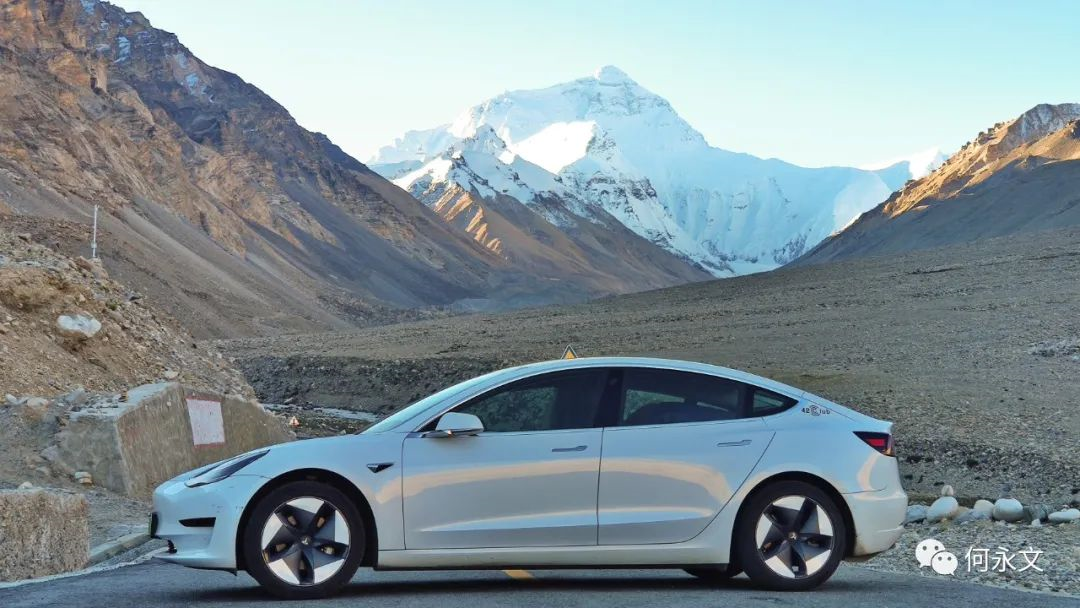A Detailed Travelogue of Travel, Charging, Road Conditions, Altitude Sickness, and Travel Recommendations
I have recorded a detailed travelogue, strategy, and cost (Excel version) of our trip to Tibet, see: 318 Tibet Journey Strategy
What was the itinerary for this trip and how many days did it take?
This trip took 16 days, covering a total of 5,500 kilometers by car. The rough itinerary was as follows:
-
Foshan, Guangdong – Chengdu (3 days, taking the expressway the whole way, around 1,900 kilometers; plus one day’s stay in Chengdu, 4 days in total)
-
Chengdu – Lhasa (6 days, 2,400 kilometers on the Sichuan-Tibet Highway, around 700 kilometers at both the starting and ending points can be taken on the expressway, taking approximately one and a half day’s travel, the rest of the route goes on the 318 National Road)
-
Lhasa – Mount Everest – Lhasa (4 days, 1,300 kilometers. Take the 349 National Road (recommended) to go, and the 318 National Road on the way back with a small amount of expressway)
-
On the 15th day, stay in Lhasa, and on the 16th day, check the car in, take a plane at night to go back home.
We unexpectedly shortened the itinerary by 7 days. Originally, we planned to go back to Lhasa from Mount Everest and then drive back to Mangkang through the 318 National Road. We then decided to drive south along the Yunnan-Tibet line, visiting Shangri-La and Dali in Yunnan, and taking the car back to Guangdong through Guangxi. This way, the total number of days would be 23, the driving distance would be 8,800 kilometers.
Around the 10th day of the trip, we decided to adjust the itinerary, the most important reason being that we wanted to return home, and secondarily we felt that the time outside was already long enough.
What kind of car did you drive and how many people were there?
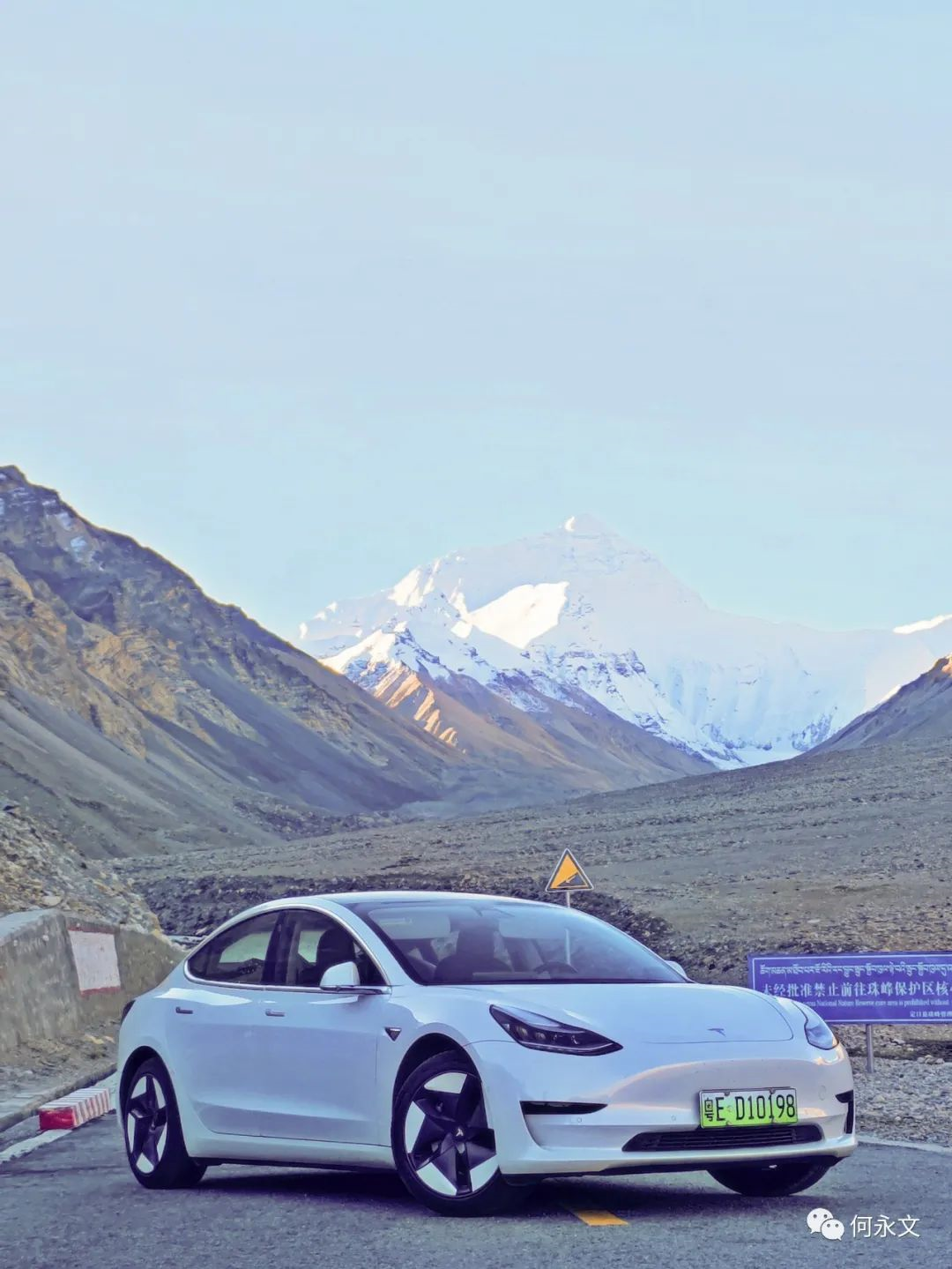
On this trip, we drove a 2020 Tesla Model 3 Standard Range Plus, a year and a half old with a full battery life of (only) 350 kilometers. The car comes with original Michelin PS4 silence tires.
There were only two people on this trip, my wife and me, with no other cars or travel companions.
How was the charging situation on the road?
Overall, it was quite smooth. We never got stuck because the car ran out of power, nor did we need to use the portable charger. Since I had more than 5,000 kilometers of free charging credits on Tesla, we only used about 2,000 kilometers of supercharging credits during this 5,500-kilometer journey.## On the 318 National Highway, from Chengdu to Mount Everest, Tesla Superchargers are fully connected. Roughly every 200 kilometers, there is a county town with plenty of hotels and restaurants. The daily journey is about 300-400 kilometers, or about 7-8 hours by car. Almost every county town has a Supercharger from Tesla, which means that there is one every 200 kilometers. It usually takes three to four hours to travel 200 kilometers, so we usually leave at 8 am and arrive at a charging station at 12 or 1 pm, which is also lunchtime. In short, there is a Supercharger every 200 kilometers, and we arrive at the charging station just in time for lunch and dinner. The layout is very well-planned.
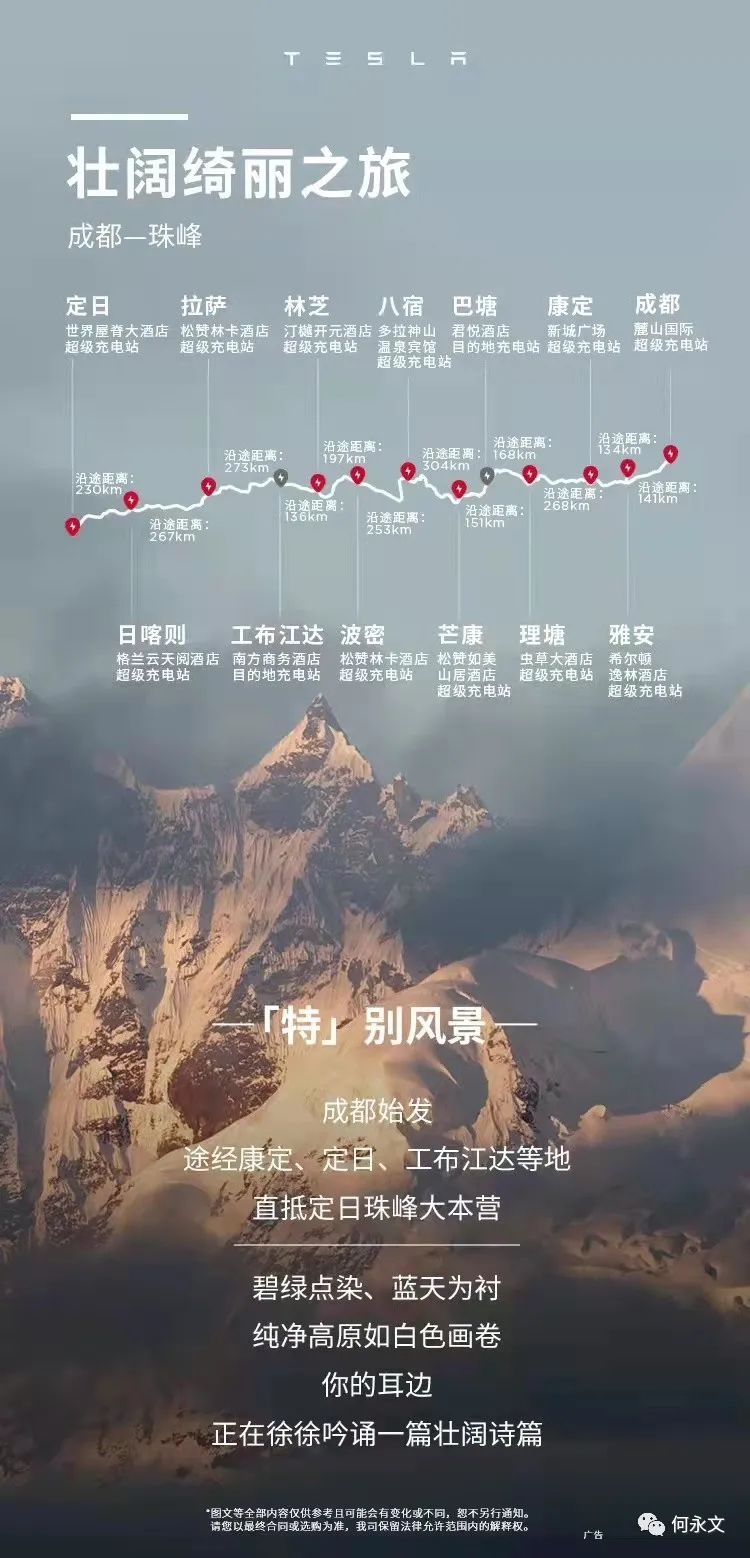
This means that I can easily drive my electric car with a range of 350 kilometers, and long-range electric cars are even more comfortable. Tesla Superchargers are installed in the best hotels in the county towns. Several of them are high-end hotels with a nightly rate of 1,500 yuan, although we didn’t stay in these hotels. When we were charging, we looked around the hotels. These hotels are built in places with unique scenery, which are great places for taking pictures.
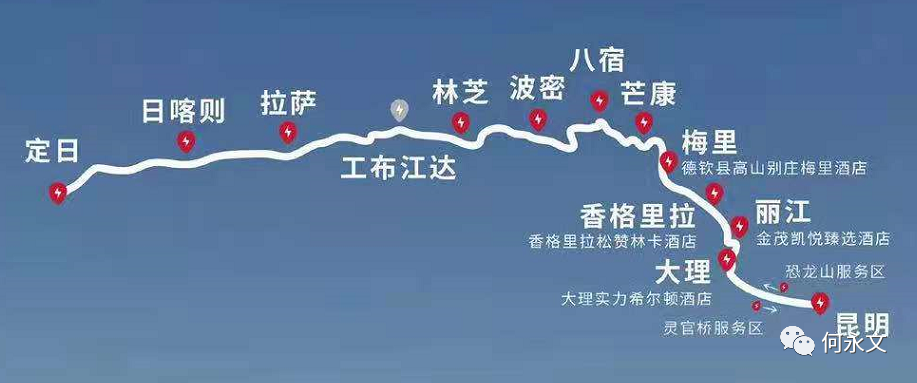
At the same time, NIO and XPeng also have charging stations along the 318 National Highway, and there is one in every county town where Tesla Superchargers are located. However, based on my observation, NIO’s charging stations are generally 20 kW, while XPeng’s are generally several kW household charging stations. Since NIO and XPeng’s charging stations are open to all vehicles, this is a reassuring guarantee for me. If the Tesla Superchargers are not available, the NIO and XPeng charging stations can be used as a backup. It is not a problem to charge at a lower power rate, the key is to be able to charge.
In addition to the charging stations of car companies, the most basic guarantee is that there are third-party fast-charging stations in almost every county town, such as the “KeWang Charging Alliance” established by Tesla car enthusiasts’ contributions, initiated by the owner of the New Dou Bridge Hotel, which also connects the 318 National Highway with a power rate of about 60 kW, also providing reliable guarantee.
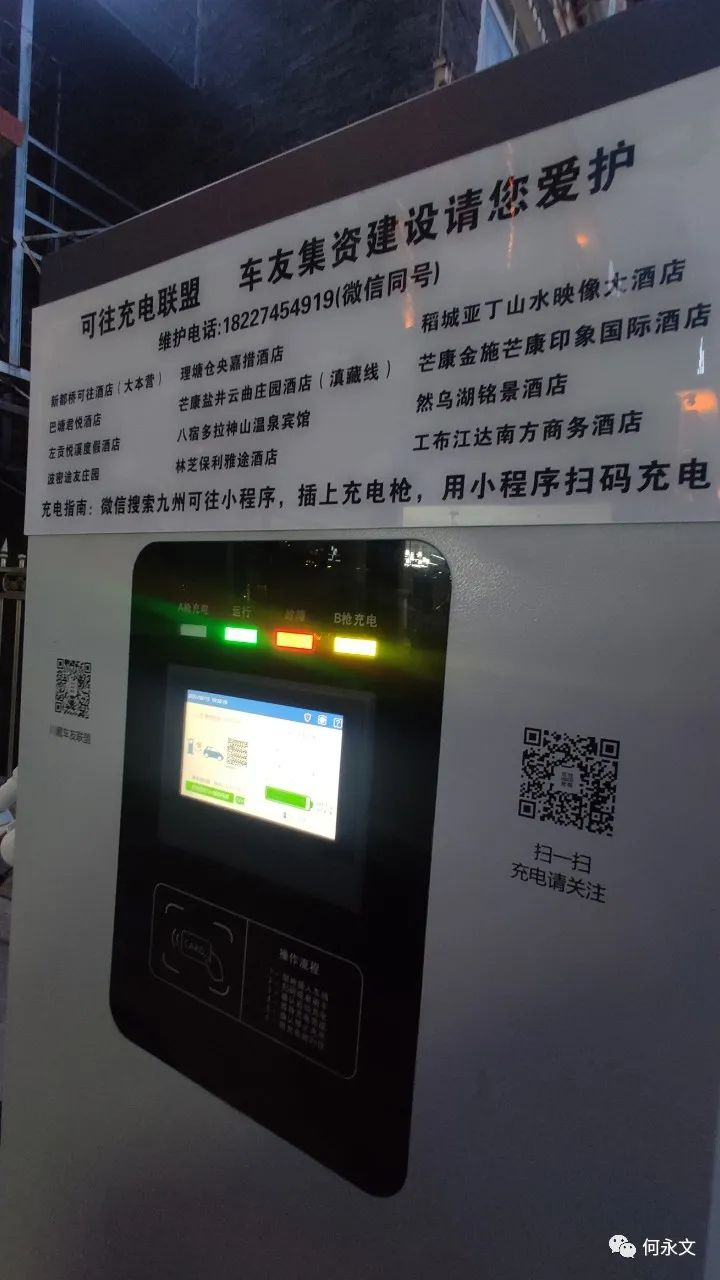
Overall, on the 318 National Highway, from Chengdu to the Mount Everest Base Camp in Dingri County, charging is not a problem. However, I have heard that charging stations are not as sufficient when traveling westward along the 318 Highway from Dingri County towards Gangrenboqi and Ali, but I did not investigate this time.The only thrilling charging experience I had was on the way from Hunan to Guizhou. I drove for 700 kilometers on the highway for the entire day and passed three service stations without charging. I had to charge three times on the highway that day. During one of those times, I arrived at the service station with only 20 kilometers left, but I couldn’t charge. Luckily, there was an exit nearby, and there was a charging station 3 kilometers away in the city. There is much room for improvement in hardware layout and software services for highway charging.
I highly recommend the best charging planning APP in China – JiaDian, developed by NIO. In addition to fully including charging piles, there is a special NIO charging brother who regularly checks in at each charging station (even third-party stations) and writes comments. If there is a problem, the charging brother actively contacts the operator for maintenance and marks it on the app. Users also actively comment after charging to let others know the actual situation and whether it is usable. It is very practical for long-distance planning! The user experience at NIO is excellent.
What is the experience of driving an electric vehicle on Route 318?
On Route 318, electric vehicles solve the charging problem, and the rest is an excellent experience. Since Route 318 is generally at an altitude of 3500-5000 meters, gasoline vehicles will experience obvious altitude sickness. From this perspective, electric vehicles are more suitable for running on Route 318 than gasoline vehicles. The following are several advantages of electric vehicles:
(1) The power does not decrease. With an altitude increase of 1000 meters, the air content will decrease by 9%. That is to say, at an altitude of 5000 meters, the air content is only about 55% of the original. Gasoline vehicles need oxygen to promote combustion, and the power of gasoline vehicles at 5000 meters is only half of the original. Of course, the power of turbocharged gasoline vehicles does not decrease so much. However, the electric motor of electric vehicles does not require air, so there is no altitude sickness, and the power is consistent with that on the plain.
The entire Route 318 Sichuan-Tibet line is a one-way single-lane road, and slow vehicles are frequently encountered on the road, such as large trucks, mud trucks loaded with giant rocks, tank trucks, and many more are small cars that drive slowly for no apparent reason (such as people taking photos in the car), which means that overtaking is often necessary. Overtaking requires using the oncoming lane, and on Route 318, there are few straight sections, and the entire journey is winding mountain roads. Occupying the oncoming lane requires extreme caution and speed. Gasoline vehicles are struggling to overtake due to power loss. If it is an uphill road, it is even more difficult. However, electric vehicles are excellent.
(2) There is no overheating of the engine. Due to the significant power loss of gasoline vehicles, and with the daily ascent of more than one thousand meters on Route 318, the engine will operate at high speed for a long time during uphill, which can easily cause overheating of the engine, resulting in the engine’s destruction. Therefore, on the uphill road, there are not many facilities but many free supply points for adding water to the car, probably every two or three kilometers. It can be seen that engine overheating is one of the safety hazards of gasoline vehicles on Route 318, and the driver needs to pay attention to the water temperature at all times.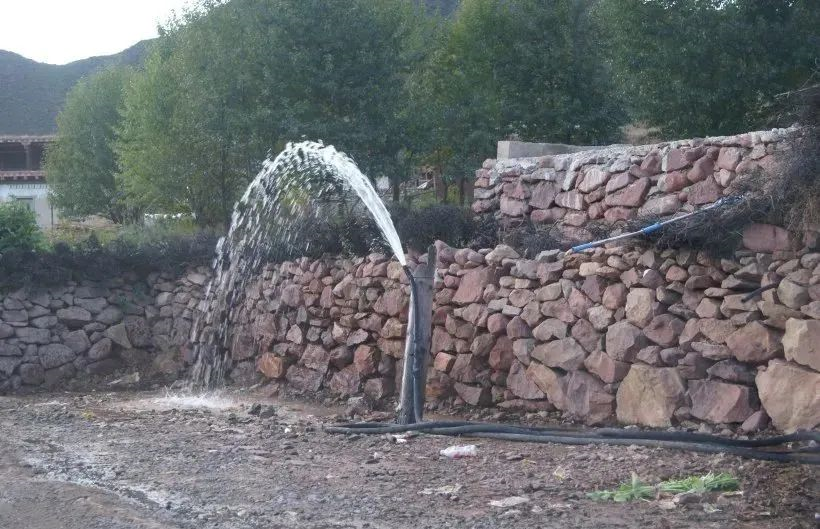
(3) Brake thermal decay will not occur. Tesla will not experience brake failure, but gasoline cars may experience brake failure on downhill roads like 318. Gasoline cars have the hidden danger of engine overheating when going uphill, and the hidden danger of brake failure due to brake thermal decay when going downhill.
As there are uphills, there are also downhills. The downhill road on 318 often drops one or two thousand meters for dozens of kilometers, with a large drop and steep slope, putting a great strain on the brake pads. It may take one or two hours to cover this distance, during which gasoline cars need to step on the brakes for one or two hours, causing brake thermal decay and weakening braking power. Accidents of vehicles rushing out of the road shoulder and rolling down the mountain due to brake thermal decay have occurred frequently on 318, and on the road there are often scrapped cars placed to warn drivers to slow down and proceed with caution.
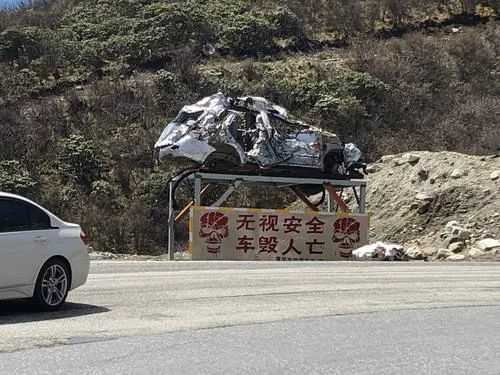
Therefore, gasoline car drivers must always pay attention to the braking performance of their vehicles. Once the performance decreases, they need to stop the car and cool it down. The road often sets up cooling pads, mainly for the tires and brake discs of large trucks, after all, the power of large vehicles going downhill is greater.
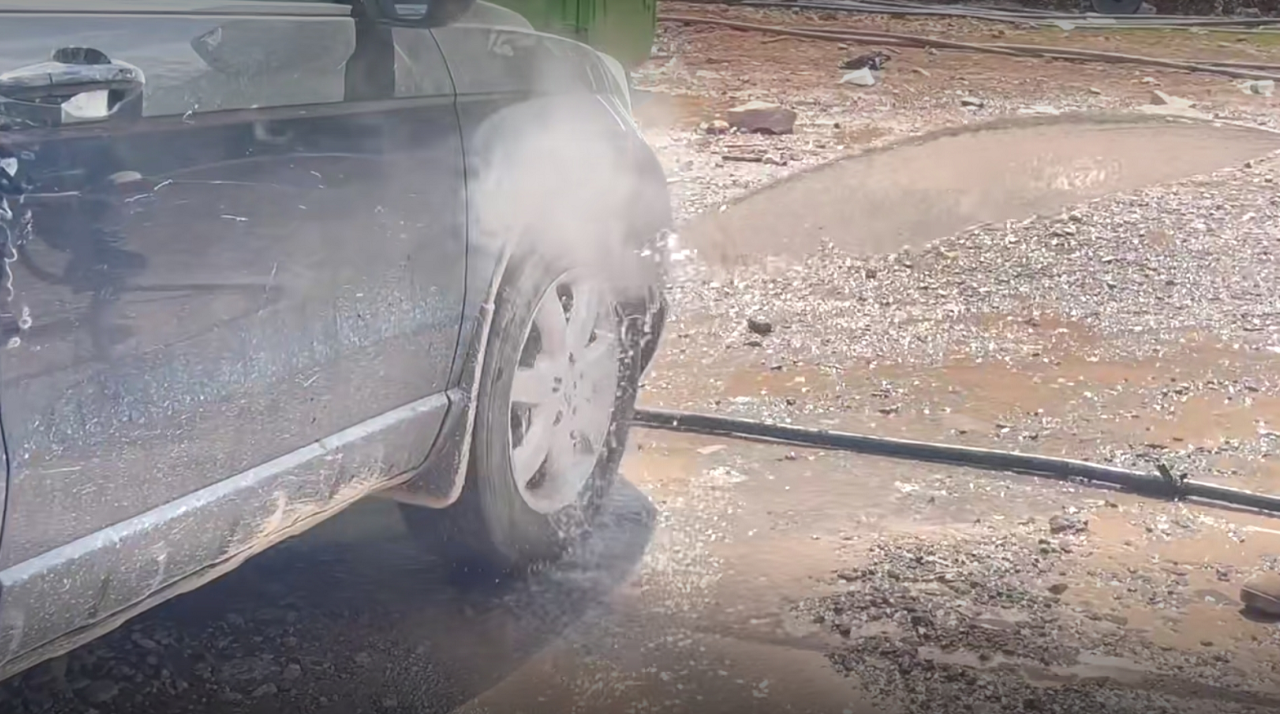
The main source of braking energy for electric vehicles going downhill is kinetic energy recovery, that is, using the kinetic energy of going downhill to convert into electrical energy, while providing considerable braking force. Compared with gasoline cars going downhill (for example, the 72-turns of the Nujiang River), electric cars may not need to step on the brake pedal at all for the entire journey, which is not only easier for the driver, but also completely avoids the problem of brake thermal decay.
(4) Kinetic energy recovery is amazing. In addition to making the driver almost not need to step on the brake and save energy, the power of the power recovered through kinetic energy recovery is also very large. Taking Tesla as an example, the maximum charging power of kinetic energy recovery can reach 60 kW, which is equivalent to the level of fast charging piles. I remember once going downhill for 70 kilometers and dropping 2 kilometers of altitude, after covering this 70 kilometers, not only did the cruising range not decrease, but it increased by 20 kilometers.With such powerful kinetic energy recovery, my average power consumption for 5500 kilometers is 12.8 degrees per hundred kilometers, the same as that on flat ground. It should be noted that two-thirds of the journey was at an altitude of over 3500 meters, with daily runs between 3500 and 5000 meters.
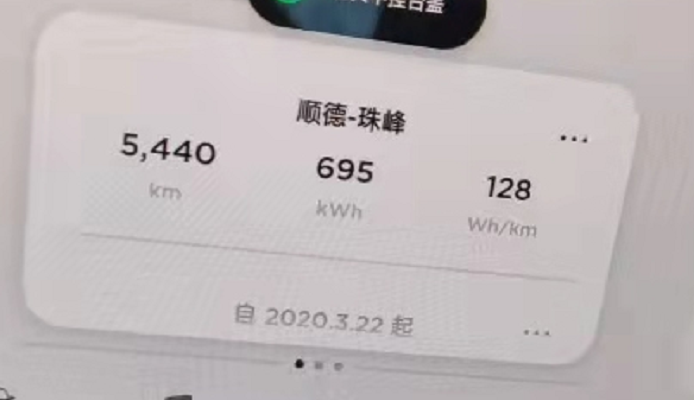
What is the condition of the road? Are sedans suitable for this trip?
The vast majority of the road conditions are very good, with 90% being flat asphalt roads, a small portion being cement roads, and a very small portion being gravel roads due to road repairs. Sedans can pass through the entire trip without any problem, and there are also many sedans on the road. However, due to the many trucks, there may be potholes on the road, so people need to pay attention to them, as high-speed passage may result in a blowout. Apart from that, there are not many hidden dangers.
There have been two or three minor bumps that did not cause any damage to the appearance. It should be because there are some protrusions on some parts during road repairs, but just slow down and pass through.
Another thing to note is that the downhill entrance of many hotels’ underground car parks in Tibet is very steep. Sedans may get stuck at the downhill entrance. I did experience a bump as a result once. If it’s not possible, just don’t go to the underground car park.
In addition, Tesla’s original tire, Michelin PS4 quiet tire, was used for this trip, and no spare tire was brought. It’s fortunate that there were no tire blowouts.
Is there altitude sickness? Is it severe?
My wife and I both had altitude sickness in the first two days on the 318 route. My wife had moderate altitude sickness after climbing over the Zadoi Pass (4,000 meters in altitude and the first time we had gone over 4,000 meters in altitude during the trip). Her symptoms included numbness in her head, hands, and feet and overall weakness, and her condition was poor. I also experienced moderate headaches for a whole day, which was very uncomfortable. However, altitude sickness is an adaptation process, and in the following days, we did not have any significant altitude sickness. Walking fast in high-altitude areas may cause some shortness of breath, but oxygen inhalation helps. When I went to the 13th day of Everest Base Camp, which is 5,500 meters above sea level, I got in and out of the car repeatedly to take pictures, and I fiddled with the car for three hours without oxygen inhalation. I can say that I am fully adapted.
Overall, altitude sickness is not that scary. Everyone will have some reaction, but with enough oxygen, there is no problem. Altitude sickness is essentially caused by a lack of oxygen, so oxygen inhalation is the key. Oxygen should be brought in sufficient quantities. There is generally little reaction below 3,000 meters in altitude, and it is appropriate to inhale some oxygen above 3,000 meters. Even if you do not have any reaction, you can still inhale oxygen. Some people believe that one should not inhale oxygen frequently, otherwise, they will become dependent, and unable to adapt to the low-oxygen environment. I do not agree with this claim. No matter how much oxygen you inhale, you will still be in a low-oxygen environment. Moreover, it is not oxygen inhalation 24 hours a day, so the human body will gradually adapt. Inhalation of oxygen helps prevent an oxygen deficiency from being too acute.We bought 8 bottles of 1L oxygen and also bought a 40L oxygen bag in Xinduqiao. It only costs 30 yuan to fill up each time, which is recommended. For self-driving friends, it is necessary to buy a portable oxygen tank with a nasal suction device, which is convenient for the driver to drive and breathe oxygen at the same time.
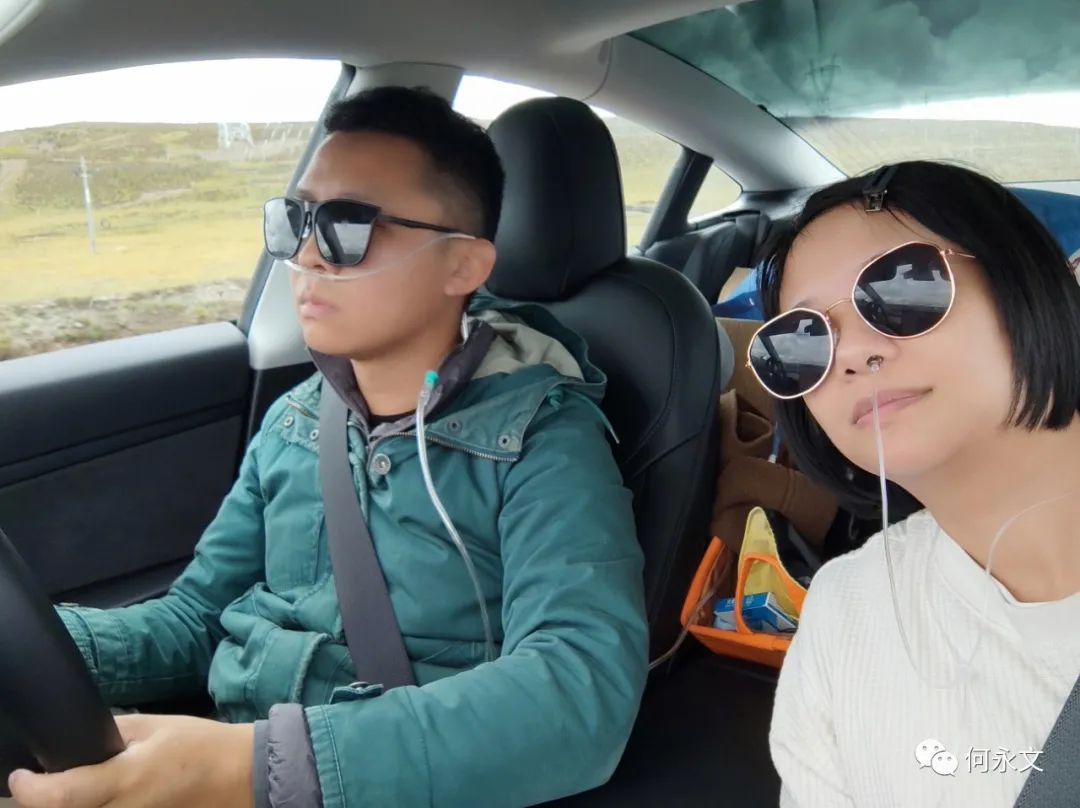
Headaches are almost a common symptom of mild to moderate altitude sickness and have a great impact on people’s mental health. It is also necessary to prepare headache medicine. However, we can’t buy ibuprofen headache medicine in the pharmacy in Xinduqiao due to epidemic control measures. We bought some Chinese patent medicine headache medicine, so those who need it should prepare in advance.

In addition, altitude sickness is also closely related to the mode of transportation. Self-driving is much better than directly flying to Lhasa. Many people who fly to Lhasa (altitude 3500 meters) feel uncomfortable due to altitude sickness. If you self-drive, you will have adapted for at least six days before arriving in Lhasa, which makes 3500 meters equivalent to the plain. I also asked my cycling friends how to overcome altitude sickness when riding uphill in high-altitude areas. Unexpectedly, he said that riding a bike is slower than riding a motorcycle, so the altitude climbs slowly. Generally, those who ride bicycles rarely use oxygen, but those who ride in cars have to breathe oxygen while driving. Interesting.
During altitude sickness, the body will mobilize more energy, so energy consumption is relatively large. At this time, supplementing energy and sugar can help alleviate discomfort, such as sweets and glucose. But ultimately, oxygen should be inhaled.
It is also recommended to buy a pulse oximeter when going to Tibet to monitor blood oxygen levels. Blood oxygen content is an objective indicator of whether the body is lacking in oxygen. Normal blood oxygen is above 98, and below 85, oxygen should be considered.
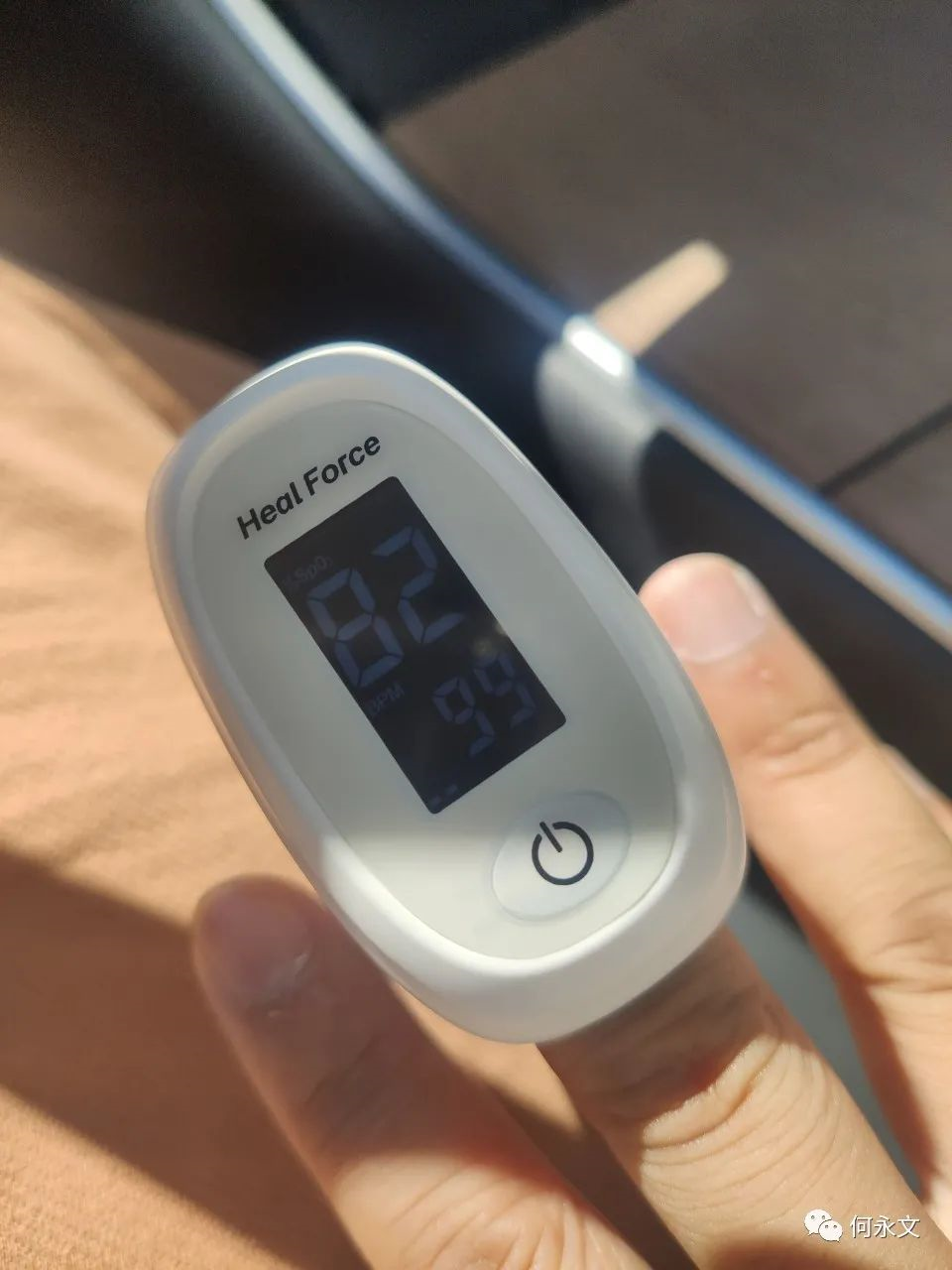
How to get to Everest Base Camp and is it worth going?
Everest Base Camp (altitude 5500) is not Mt. Everest itself. It is the closest place for tourists to observe Mt. Everest, about 19 kilometers in a straight line from Mt. Everest. The Everest Base Camp is located in Dingri County, about 110 kilometers away from Dingri County (3 hours’ drive). Since Dingri County has Tesla supercharging stations, range anxiety won’t be a problem for the round trip to Everest Base Camp after a full charge in Dingri.# The Cost and Accommodation Information for Visiting the Everest Base Camp
To visit the Everest Base Camp, visitors need to purchase a ticket. The price for cars is 320 yuan, including the driver, while passengers need to pay 160 yuan per person. The ticket purchasing location is about 70 kilometers away from the Base Camp. Visitors who have purchased tickets need to drive for another 40 kilometers to switch to electric buses, and then travel another 30 kilometers to reach the Base Camp, costing 120 yuan per person. However, pure electric cars can directly drive to the Base Camp.
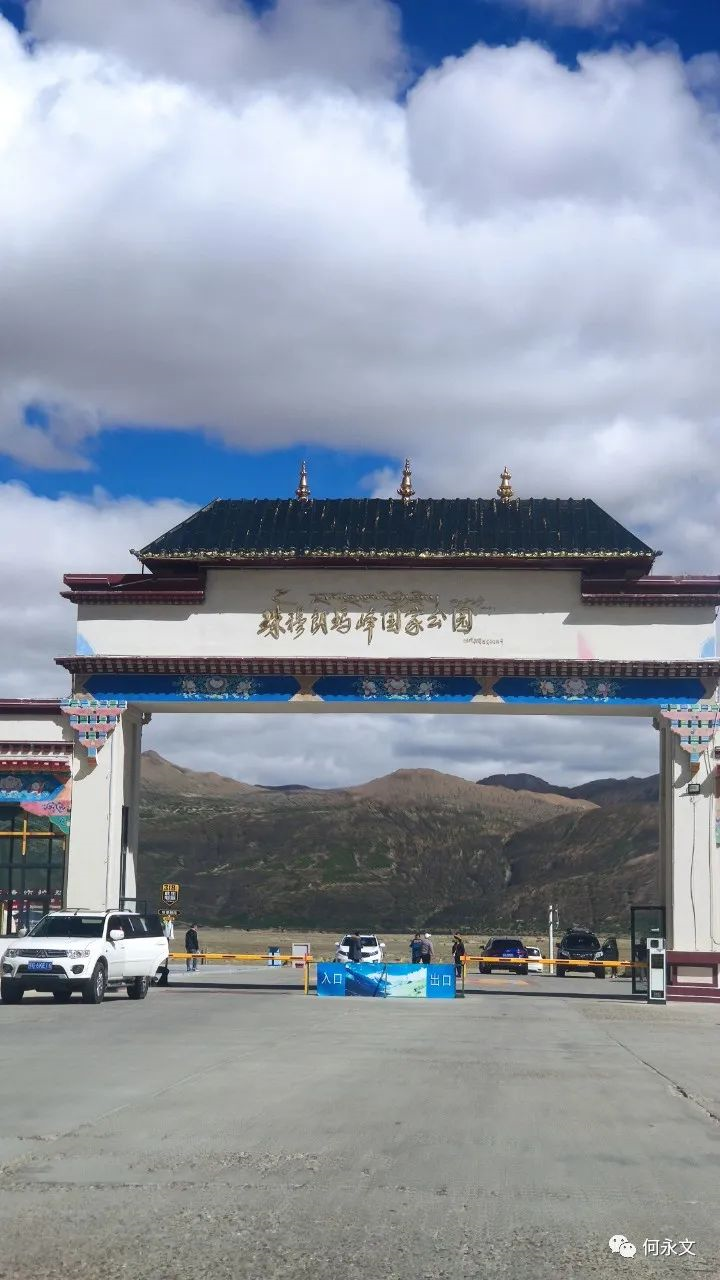
There is accommodation available at the Everest Base Camp, but the conditions are extremely challenging, or even harsh. The lodging consists of large tents, each tent accommodating about 8-10 people without separate rooms or partitions. The bedding is not washed frequently, and there is a significant odor. At night, cow dung is burned for warmth inside the tent, which is also not pleasant. The toilets are portable, and hygiene conditions are suboptimal.
We did not choose to stay at the Base Camp for two reasons: firstly, the Base Camp’s altitude is relatively high, and secondly, the accommodation environment is poor. As we drove an electric car, we could easily come and go. Therefore, we chose to depart at 5 am to witness the sunrise at 8 am. Staying at the Base Camp has two advantages: first, it allows more time to stargaze (weather permitting), and second, visitors can stay longer to ensure a better chance of seeing Mount Everest.
However, it should be noted that Mount Everest is not always visible. Due to the dramatic changes in weather at the top of the mountain, it is often obscured by clouds and fog. Some visitors may spend several hours or even an overnight stay without catching a glimpse of the mountain. If visitors can see it clearly, one to two hours’ stopover time is sufficient. I stayed a little longer for car filming purposes.
It is undoubtedly frustrating to spend three or four days and not even catch sight of Mount Everest. It is also possible for some visitors to feel that Mount Everest is not as majestic as they had imagined. In a previous article on my public account [“My Trip to Tibet”], I wrote, “it is not Mount Everest that is sacred, but your heart – if you consider it sacred, it becomes so.” At least, I think it is worth visiting.
How much did this journey cost?
Two people spent 16 days and 15 nights, drove to the Everest Base Camp and flew back, including baggage check-in. The total cost was 16,000 yuan.
- Accommodation was 3,500 yuan, 235 yuan per night, and the lodging accommodations are of medium to high quality along the way, with prices ranging mainly between 200-350 yuan.② Food expenses: 2900 yuan. About 190 yuan per day. The restaurants along the road mostly serve Sichuan cuisine with affordable prices. A bill for two people could be around 60 to 70 yuan for a small stir-fried meat dish and a vegetable dish. During the later week of the trip, we ordered takeout and had it delivered to the hotel. The reasons were that we were too tired to go out and the choices for takeout were more diverse. In addition, most of our hotels did not provide breakfast.
③ Transportation expenses: 4800 yuan. This includes 3600 yuan for two air tickets and 1000 yuan for the expressway tolls from Guangdong to Chengdu.
④ Car transportation expenses: 2900 yuan. This includes 200,000 yuan of insurance and it takes about 10 days for the car to be transported back to Guangzhou from Lhasa.
⑤ Admission fees: 790 yuan. This includes 480 yuan for Mount Everest, 120 yuan for Yamdrok Lake, and 100 yuan for Sera Monastery. In fact, there are not many admission fees along the way, and the most beautiful scenery is indeed on the road. We did not go to Potala Palace.
⑥ Charging expenses: 360 yuan. I used about 2000 kilometers of free Tesla supercharging mileage. If all 5500 kilometers were charged at a cost of 1.5 yuan/kWh, a total of about 700 kWh would cost about 1000 yuan.
⑦ Medicine expenses: 200 yuan. This includes a portable oxygen bottle, an oxygen bag, and headache medicine.
As mentioned in the opening, we changed the itinerary at the last minute and did not drive the car back to Guangdong, which saved us 8 days and 7 nights of accommodation and food expenses, but we still spent money on air tickets and car transportation expenses. Roughly calculating, shortening the itinerary cost us an additional 1500 yuan. That is to say, if the journey is from Sichuan to Yunnan for 23 days, the total cost is 14,500 yuan.
Suggestions for designing a travel itinerary
For those who do not have as much time as us, we suggest the following itinerary designs:
① A 8-day itinerary: Send the car for transportation to Chengdu in advance (or rent a car in Chengdu) and take a flight to Chengdu on the first day. From the second day to the seventh day, drive on Highway 318 from Chengdu to Lhasa. On the eighth day, visit Potala Palace or another attraction and then fly back while sending the car for transportation. (This is the shortest plan and also the most expensive one in terms of round trip transportation and airfare. The most beautiful scenery is on the road, and the main purpose is to experience the Sichuan-Tibet line.)
② A 10-day itinerary: Add attractions within 2-3 hours of driving around Lhasa, such as Yamdrok Lake and Namtso Lake, on the foundation of the 8-day itinerary. (This is a moderate plan, and Yamdrok Lake is a stunning attraction that would leave a lasting impression.)
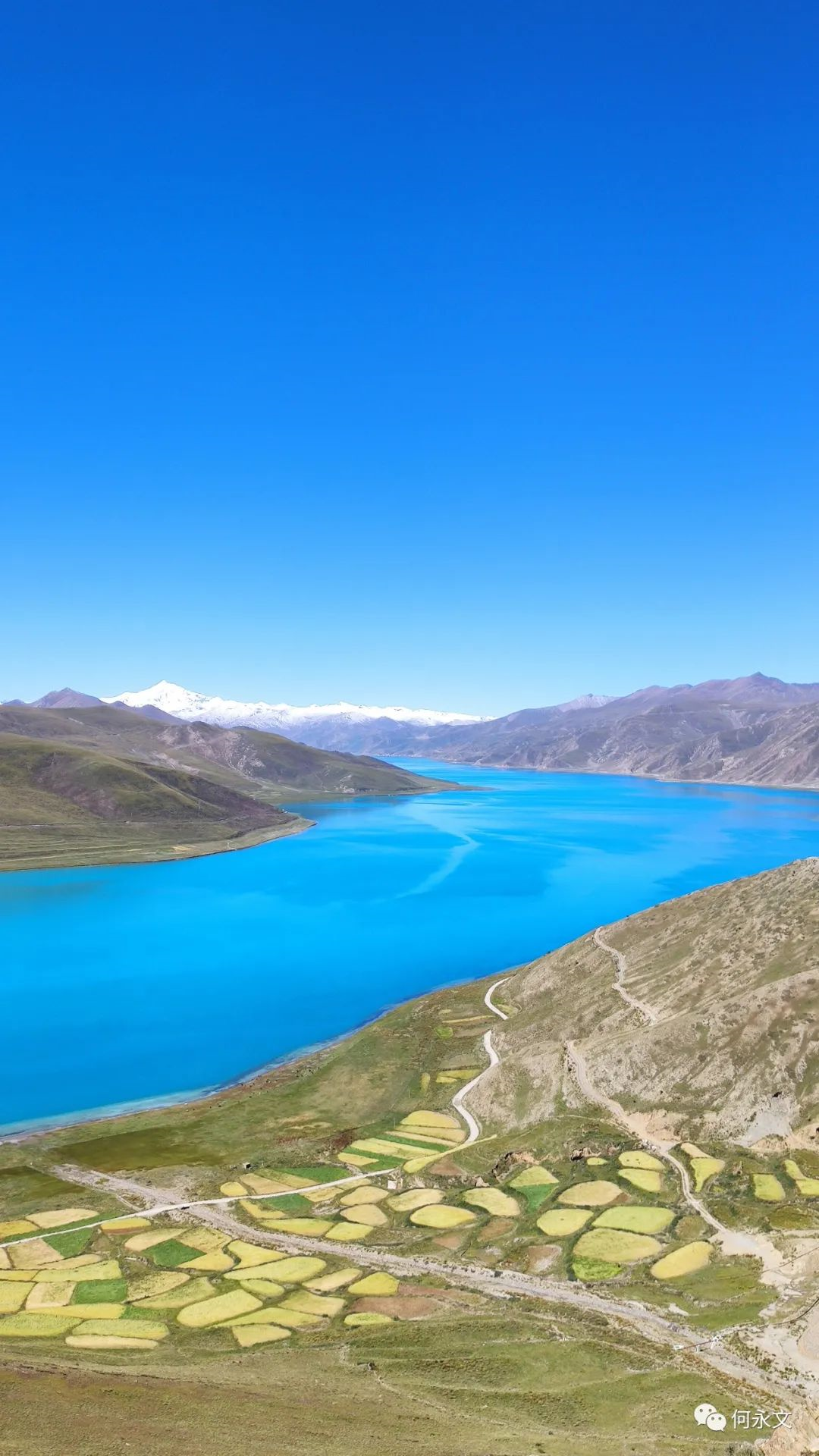
③ A 12-day itinerary: Go to Mount Everest on the foundation of the 8-day itinerary. It takes 4 days to travel from Lhasa to Mount Everest and then back to Lhasa.The essence of touring Tibet is self-driving, including the Sichuan-Tibet Line, Yunnan-Tibet Line, and Qinghai-Tibet Highway. If not self-driving, you can also take a direct flight to Lhasa and join a small group to visit Mount Everest and other surrounding attractions, which is also feasible for six days. However, high altitude sickness may pose some discomfort for those who take direct flights to Lhasa.
Notes
① Potala Palace. We didn’t visit Potala Palace this time, but we have some information to share.
- Tickets are not available on the spot and need to be booked in advance through WeChat. During peak times, ticket availability is limited and requires prior preparation. The ticket costs 200 yuan per person.
- Potala Palace is tall, estimated to be about ten stories high, and the focus of the visit is at the highest point. Therefore, after entering Potala Palace, visitors need to climb to the top. This is a big challenge for those suffering from high altitude sickness. Some tourists cannot make it to the top even after paying, especially those who take direct flights to Lhasa.
- Many Buddha statues and important human figures are enshrined in the Potala Palace, including Tathagata, Avalokitesvara, various Buddhas, Songtsen Gampo, Princess Wencheng, etc. It is also a place to watch the lamas chant. The point of interest is cultural and it is recommended to hire a guide for explanation; otherwise, it is a waste of money if visitors cannot understand.
- Wearing a skirt is not allowed.
② Anti-skid chains for cars. On the Sichuan-Tibet Line, you will climb over high mountains of four to five thousand sea levels almost daily, where it may snow. If it is the season with a high probability of snow, it is strongly recommended to bring anti-skid chains for the car’s tires; otherwise, driving on icy roads and snowy roads can easily cause slipping and ineffective braking, which is very dangerous. In addition, there are cases where the police block icy roads, only allowing vehicles with anti-skid chains to pass.
Money-saving tips: I found a TB anti-skid chain seller who offers a one-month no-reason return policy. After the journey ended and we didn’t use them, we returned them.
③ Yamdrok Lake. Yamdrok Lake is not a paid scenic area that anyone can visit along the national road. The first parking lot encountered on the way to the lake charges an admission fee of 60 yuan per person. This parking lot is not the entrance to the scenic spot. It is entirely unnecessary to pay this fee because many people take photos by the roadside from the same angle. If you drive ahead for another two or three kilometers, there is another parking lot that charges only 10 yuan. There are even more free parking lots ahead, each with its unique photo-taking angle.
④ Spare tire. Many new energy vehicles no longer come with a spare tire. Whether to buy one or not was my biggest concern before departure. Later, I decided not to bring it for three reasons: the vast majority of roads are in good condition, carrying a spare tire takes up too much space in the trunk, replacing a tire is strenuous work and may cause high altitude sickness. If a tire blows out, you can use car insurance’s free towing service of 80 kilometers and Tesla’s free towing service of 80 kilometers. I consulted Tesla, and the company also provides free service for the Sichuan-Tibet Line, but the waiting time for the car was long due to the slow speed of the No. 318 Highway. In addition, consider equipping non-silent tires with tire sealant.
⑤ Use antifreeze coolant and windshield washer fluid. Since the temperature can easily drop below zero at high altitudes, the windshield washer fluid and coolant on the car should be changed to antifreeze in advance. It’s best to have some extra in the car in case of adding more.⑥ Portable Charger for Electric Cars. For new energy cars, although there is a guarantee for charging on 318, there are still uncertain factors, so it is necessary to carry a portable charger as a backup plan just in case. The media friends from Garage 42 lent me a portable charger as a guarantee when they heard that I was driving an electric car to Tibet, but luckily I didn’t have to use it this time.
⑦ Sun Protection. The UV rays in Tibet are very strong. It’s chilly in places without the sun, but the skin burns when exposed to the sun. Moreover, the sunlight is very dazzling, so it is necessary to do enough sun protection, especially for long-distance driving. Ice sleeves, sun protection clothing, sunglasses, sun protection masks, and sun protection gloves (for driving).

Conclusion
Driving on 318 is a very memorable experience, allowing you to feel the vastness of the motherland and the magnificence of the scenery. The catchy slogan “Must drive on 318 in your lifetime” must be agreed upon by everyone who has been there.
Let’s hit the road!
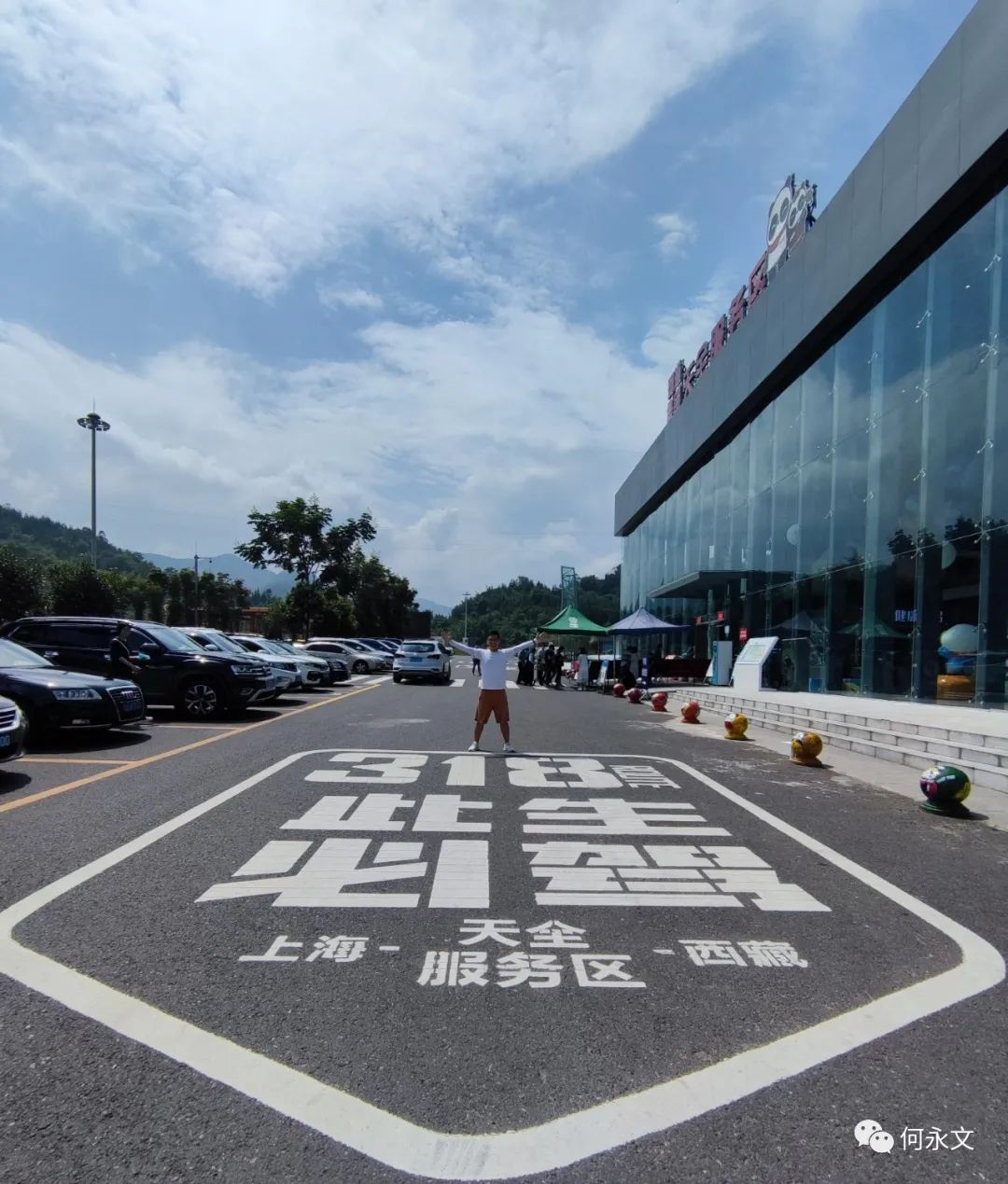
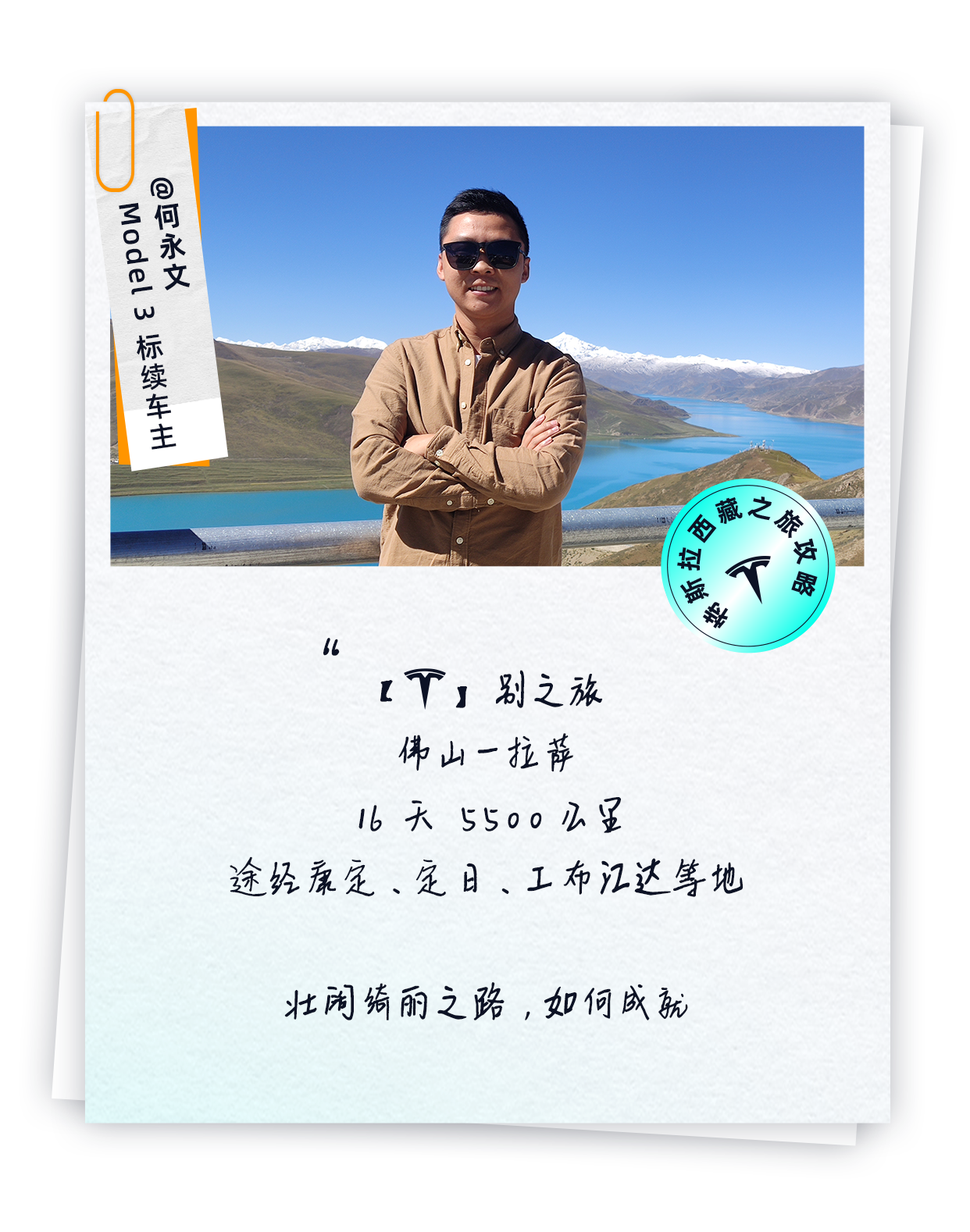
This article is a translation by ChatGPT of a Chinese report from 42HOW. If you have any questions about it, please email bd@42how.com.
